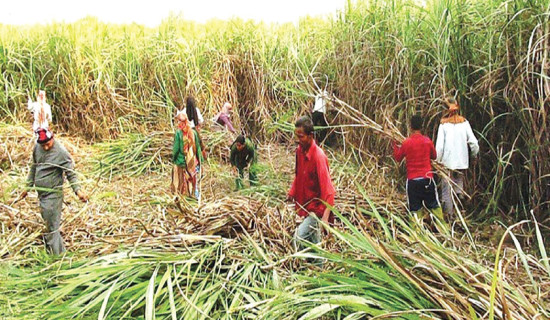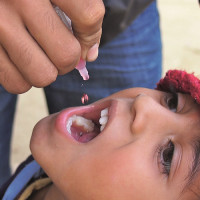- Saturday, 27 December 2025
147 nests of rare vultures recorded in Sudurpashchim Province
BY ABINASH CHAUDHARY,Dhangadhi,Sept,1: A total of 147 nests of rare vultures including white-rumped vultures and slender-billed vultures have been recorded in Sudurpashchim Province. The nests were recorded during a recent survey conducted across various districts. The survey of vulture nests in Sudurpashchim Province was conducted in 2023 and 2024.
According to the study, 132 nests of the rare white-rumped vulture, nine nests of the Himalayan vulture and three nests each of the slender-billed vulture and bearded vulture were found. Among these, the highest number of nests, 120, were found in Kanchanpur district.
In the Bhojpurphat area of Kanchanpur, there were 82 nests of the white-rumped vulture and two nests of the slender-billed vulture whereas, in the Hirapur area, there was one nest of the slender-billed vulture. Similarly, there were 17 nests of the white-rumped vulture in the Tarapur area, six in the Bansha area, eight in the Parsia area and one in the Kanja area.
In the Khutiya Important Bird and Biodiversity Area of Kailali, 13 nests of the white-rumped vulture have been found, while in Dadeldhura there were two nests. In Khodpe of Baitadi, nine nests of the Himalayan vulture and three nests of the bearded vulture have been found.
According to bird expert Hiru Lal Dagaura, the study showed that the status of vultures in Sudurpashchim Province has improved. He said, “Even though the number of nests is decreasing in Kailali, the overall status of the province is improving. The situation in Kanchanpur is very good. Similarly, a new breeding area has been found in Dadeldhura, which is very encouraging.”
Vultures build their nests on tall trees and raise their fledglings there. The main reason for the decline in nests in Kailali is reported to be the destruction of vulture habitats. Many of the trees where vultures used to build their nests in the fields of the Khutiya area have been cut down. Similarly, many tall trees were uprooted by storms in the Khutiya area and floods have affected the areas where vultures used to build their nests. These various factors have led to vultures abandoning their nesting areas, according to the study.
Since vultures, known as nature’s cleaners, are disappearing day by day, the government has implemented a vulture conservation action plan for their protection. To support vulture conservation, the government has completely banned the production, sale, distribution and use of the veterinary drug Diclofenac.
Nepal has declared 76 districts as Diclofenac-free zones for animal treatment. However, the illegal use of Diclofenac still poses challenges to vulture conservation, said bird expert Dagaura.
According to him, efforts such as the establishment of Jatayu Restaurant (safe feeding centre), veterinary monitoring, habitat conservation and public awareness programmes are underway for vulture conservation.
In Nepal, vultures are dying after getting trapped in unmanaged electric wires. Similarly, injured vultures often die if they are not rescued in time. The development of modern agricultural systems and the practice of burying dead livestock has resulted in food shortages for vultures. Habitat destruction and various human activities pose challenges to vulture conservation. Recent research has identified drugs like Ketoprofen, Aceclofenac, Carprofen and Flunixin as toxic to vultures. The use of these drugs in Nepal is also affecting vulture conservation.
Meanwhile, to increase awareness and efforts towards vulture conservation, Nepal is celebrating International Vulture Awareness Day from September 1 to 7.

.jpg)














